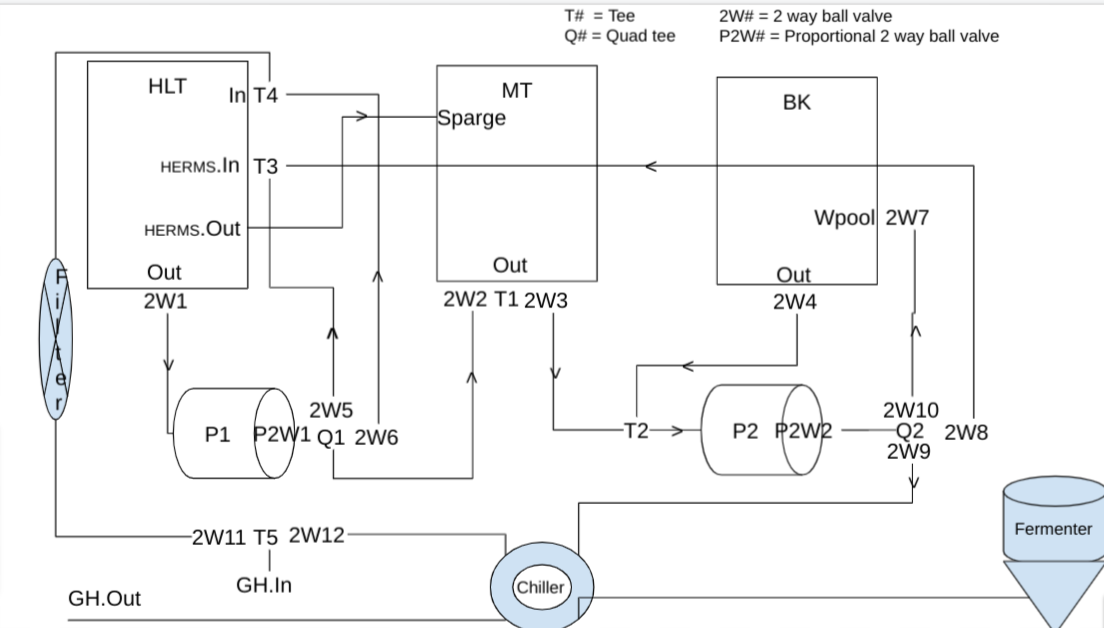I am pivoting from a Propane brew tree set-up to a 3 vessel eherms set-up. Have tanks and uniflex coming in the next few weeks. Have been trying to read up on automation and eherms configurations. I would like to start with manual valves, but configured in such a way that I can just switch to automated valves and system design is the same. My tanks are 1.5"TC and reasonably priced automated valves are 1/2"NPT so will probably buy 1/2"NPT manual valves and get 1.5"TC-->1/2"FNPT converters
Attached is a picture of the design. I might start out with the proportional valves for fly sparging so I have left them in. The 3W valves next to them would go under the table with the pumps. Every other valve would get attached to a vessel. I have configured everything to use L config 3W valves because that seems to be the only ones that @BrunDog sells. I would probably manually connect/disconnect the garden hose (rather than 3WL6 since those steps are reasonably far apart.
Would really appreciate advice from those who have HERMS systems and especially those who have automated. Not putting a valve on the MT output seems odd/dangerous, but just a short hose to the 3way and no hoses would be moved during brewing. I had a 2W on each vessel and a simple "T" before the pump, but the config in this picture has less valves. Also, 3WL1 is to allow for HLT re-circ in addition to Sparge/MLT fill path. Do folks find that helpful to maintain temp consistency? Would be a simpler config to eliminate that if not needed. Could attach Garden Hose to that TC connection if opened up.

Attached is a picture of the design. I might start out with the proportional valves for fly sparging so I have left them in. The 3W valves next to them would go under the table with the pumps. Every other valve would get attached to a vessel. I have configured everything to use L config 3W valves because that seems to be the only ones that @BrunDog sells. I would probably manually connect/disconnect the garden hose (rather than 3WL6 since those steps are reasonably far apart.
Would really appreciate advice from those who have HERMS systems and especially those who have automated. Not putting a valve on the MT output seems odd/dangerous, but just a short hose to the 3way and no hoses would be moved during brewing. I had a 2W on each vessel and a simple "T" before the pump, but the config in this picture has less valves. Also, 3WL1 is to allow for HLT re-circ in addition to Sparge/MLT fill path. Do folks find that helpful to maintain temp consistency? Would be a simpler config to eliminate that if not needed. Could attach Garden Hose to that TC connection if opened up.

Last edited:






